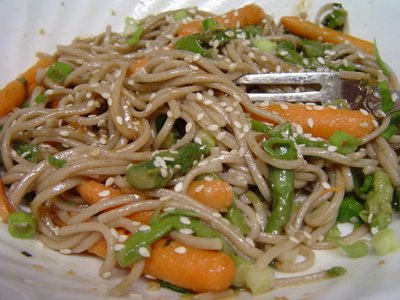Finding New Zealand in New Jersey
Such is the case with the clam bar we ended up at this past weekend. It’s unapologetic in its simple décor, if you can call dimly lit, unfinished floors, and a full view of a galley-like kitchen décor. The food’s not extremely varied, tending primarily to clams, crabs, shrimp and the obligatory fried flounder filet, but we did have a quite tasty bisque (bonus points for the large jars of crunchy oyster crackers on the table) and fried soft-shells. We also split an appetizer of New Zealand mussels – and this is the exciting part – the very small store in the front of the restaurant sells them frozen for a reasonable price. I am decidedly spoiled after growing up eight minutes from the Jersey shore, but I’m not averse to a good frozen seafood product if you can’t find a better fresh one.
I had planned on going back but perhaps not quite so soon. Nevertheless, when catching the late train back last night and knowing I had no more leftovers, I found myself turning the car into the parking lot. A few minutes later and I had myself a 2 lb box of mussels and some soft-shell crabs whose fate I haven’t decided yet. But the mussels. I headed back home, started a quick sauce with pantry staples, and threw a handful in to heat. Twenty minutes later, and I think I’ve found a new alternative to canned soup and salad for when the leftovers run out. If you use frozen mussels, as I did, I think it does lack of bit of fresh mussels' brininess, but this can be alleviated by a smidgen of salt. As the cookbook warns, the recipe won't make a lot of broth, though you could always increase the liquid, but you will want to soak up whatever's there with some good crusty bread.
 MUSSELS IN SAFFRON-GARLIC BROTH
MUSSELS IN SAFFRON-GARLIC BROTHadapted from the Dean and DeLuca cookbook
1 Tbsp olive oil
1/2 medium onion, finely chopped
4-5 garlic cloves, coarsely chopped
large pinch of saffron threads
1/2 c white wine
1/2 c diced tomatoes and juices
6-8 mussels
Heat the olive oil in a saucepan over medium-low heat until hot. Add the onion, garlic, and crumble in the saffron, and cook for 5-7 minutes, stirring, until the onion is softened but not brown.
Add the wine and tomatoes in their juice and bring to a boil. Add the mussels and cover the pot tightly. Cook over high heat for 3-5 minutes until the mussels are heated through (if you are lucky enough to be using fresh mussels, cook 4-5 minutes or until the mussels have opened, discarding any that do not open. Either way, do not overcook).
Makes dinner for one with salad and bread.














